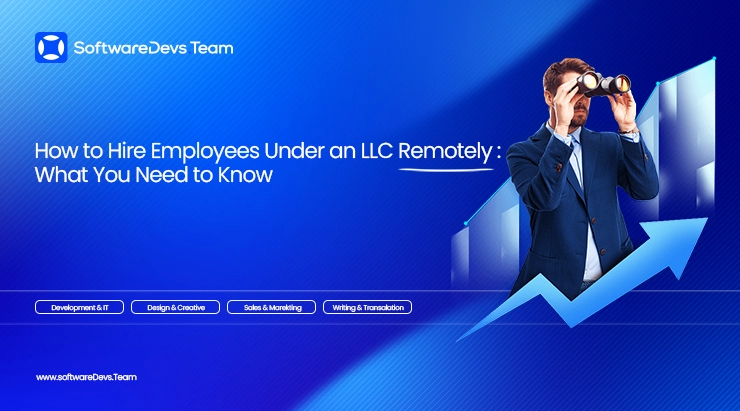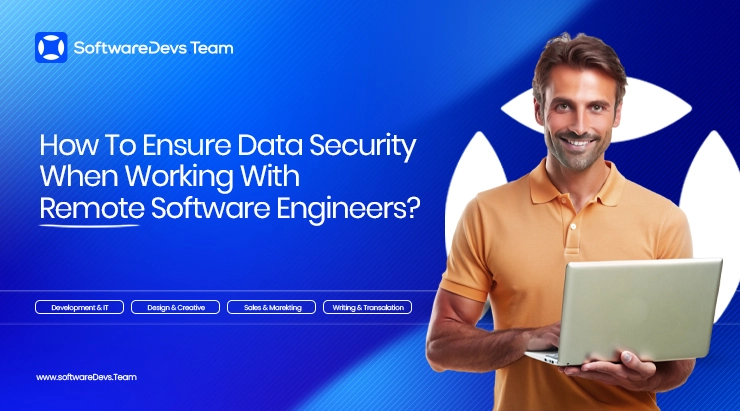How to Hire Employees Under an LLC? Hiring employees remotely has become a common practice for many businesses, especially those operating as Limited Liability Companies (LLCs). Remote hiring has many benefits, such as access to a global talent pool, economic costs, and increased employee flexibility. However, it also presents unique challenges that must be addressed to ensure a successful hiring process.
In this blog, we will explore the specific challenges of hiring employees remotely under an LLC and offer ten practical ways to recruit and manage remote workers successfully. Whether you are just starting your LLC or looking to grow your remote team, this guide will help you understand the complexities of How to Hire Employees Under an LLC.
Can an LLC hire employees?
Absolutely, yes, however, it comes with challenges:
Legal Compliance
After following through, one of the most important aspects is How to Hire Employees Under an LLC. LLCs must deal with different federal, state, and local employment laws, which can change depending on where employees live. This includes knowing about labor laws, tax rules, and employment contracts.
To handle legal compliance:
Talk to legal experts who know employment law to ensure you follow all legal rules.
Stay updated on changes in employment laws to avoid legal problems.
Ensure employment contracts are clear and follow the legal requirements of where the employee lives.
Understand the tax rules for hiring remote employees from different states or countries and ensure correct tax reporting and withholding.
Communication Barriers
Effective communication is crucial for remote teams. So, How to Hire Employees Under an LLC? However, having clear and consistent communication is challenging when employees are are from different locations and time zones. Miscommunication can lead to misunderstandings, decreased productivity, and a lack of team cohesion.
To overcome communication barriers:
· Implement regular virtual meetings using video conferencing tools like Zoom or Microsoft Teams to facilitate face-to-face interactions.
· Use collaborative platforms like Slack or Microsoft Teams for daily communication and project collaboration.
· Have clear communication protocols and guidelines to ensure everyone is on the same page.
· To build trust, you must have transparent communication and rapport among team members.
Technology and Infrastructure
Remote work depends heavily on technology. Ensuring all employees have the right tools and setup can be challenging. This includes providing reliable internet, updated software, and secure access to company systems.
To tackle technology and infrastructure challenges:
· Invest in good remote work tools and software to improve productivity and collaboration.
· Give employees the hardware they need, like laptops and headsets, to do their jobs well.
· Ensure strong cybersecurity measures to protect important company data and prevent breaches.
· Offer technical support to help employees fix issues and keep things running smoothly.
Cultural Integration
Building a solid and inclusive company culture can be tricky when employees work remotely. Remote teams might feel isolated, and creating a sense of belonging and teamwork can be hard.
To promote cultural integration:
· Plan different team-building activities virtually. These events help the team to strengthen the bonds.
· Encourage regular check-ins and informal interactions to keep everyone connected.
· Celebrate achievements and milestones to boost morale and show appreciation for employees’ hard work.
· Endorse diversity and inclusion initiatives to create a welcoming environment for all employees, no matter where they are located.
Performance Monitoring
Monitoring and evaluating employee performance can be more challenging in a remote setting. Without direct oversight, it can be difficult to track productivity and ensure that employees are meeting their goals.
To effectively monitor performance:
· Set clear performance expectations and goals for all employees so they know what is expected of them.
· Use project management tools like Asana or Trello to track progress and deadlines.
· Implement regular performance reviews and feedback sessions to discuss achievements and areas for improvement.
· Encourage a results-oriented work culture, focusing on outcomes rather than hours worked.
Software Devs Team: Way for Single-Member LLC to Hire Employees
Partner with Software Devs Team
How to Hire Employees Under an LLC? Remote recruitment agencies specialize in finding and placing remote employees. Partnering with these agencies can save you time and effort in the hiring process because they are experienced and have resources which help them to quickly identify qualified candidates.
When working with remote recruitment agencies:
Choose agencies experienced in remote work and aware of the unique challenges of hiring remotely.
Provide detailed job descriptions and requirements so the agency understands what you need.
Stay involved in the process by reviewing candidate profiles and participating in interviews to make the final decision.
Develop a Comprehensive On-boarding Program
A well-structured on boarding program is essential for integrating new remote employees into your team. So, How to Hire Employees Under an LLC? Provide thorough training, introduce new hires to key team members, and offer ongoing support to help them adjust to their roles and the company culture.
To develop an effective on boarding program:
Create a detailed onboarding plan that covers the first few weeks or months of employment.
Include virtual training sessions and resources to help new hires understand their roles and responsibilities.
Schedule and make regular check-ins to address any questions or concerns and provide feedback.
Assign a mentor or buddy to help new employees navigate the company and feel more connected.
Invest in Remote Work Tools
Next in How to Hire Employees Under an LLC? Give your remote employees the tools they need to succeed. This includes communication platforms, project management software, and collaboration tools. Investing in the right technology can boost productivity and make teamwork easier.
When investing in remote work tools:
Research and choose tools that best fit your company’s needs and workflows.
Make sure you provide training and support to your employees so they can use the tools effectively.
Regularly review and update your tools to stay current with technological advancements and changing needs.
Offer Competitive Compensation and Benefits
If you want To attract top talent, you should offer competitive pay and benefits. Consider providing remote-specific perks like home office stipends, flexible work hours, and wellness programs to make your company more appealing to remote workers.
To offer competitive compensation and benefits:
Conduct market research to understand the standard pay and benefits for remote positions in your industry.
Offering flexible work arrangements that match to different time zones and personal preferences.
Provide extra perks like home office stipends, internet reimbursements, and wellness programs to support remote employees’ needs.
Focus on Continuous Training and Development
Next in How to Hire Employees Under an LLC is Training and development. They are key to keeping your remote employees engaged and motivated. Offer opportunities for professional growth, like online courses, workshops, and certifications. Encourage employees to expand their skills and advance their careers within your company.
To focus on continuous training and development:
Identify the training needs and create personalized development plans for each employee.
Offering easy access to online learning platforms and other resources that match employees’ career goals.
Encourage participation in industry conferences and webinars. This helps you stay updated on the latest trends and best practices.
Provide regular feedback and coaching to support employees’ growth and development.
FAQs
Can a single-member LLC have W-2 employees?
Yes, a single-member LLC can have W-2 employees. Just like any other business, you can hire employees and pay them through a payroll system. However, you must follow employment laws and handle payroll taxes.
What is the best way to pay employees in a small business?
The best way to pay employees in a small business is to use a payroll service. Payroll services handle all the details, such as calculating pay, withholding taxes, and filing tax forms, ensuring that employees are paid correctly and on time.
How do I add employees to my business?
To add employees to your business, follow these steps:
- Get an Employer Identification Number (EIN) from the IRS.
- Register for state and local taxes as needed.
- Create a payroll system to handle employee payments and tax withholdings.
- Prepare employment contracts that outline job responsibilities and terms.
- Complete necessary paperwork like Form W-4 and Form I-9 for each employee.
How do I add a 1099 employee to my LLC?
To add a 1099 employee (independent contractor) to your LLC:
- Create a contract outlining the work to be done and payment terms.
- Have the contractor fill out Form W-9 to provide their taxpayer information. Keep in mind the LLC employee taxes.
- Pay the contractor as agreed in the contract without withholding taxes.
- At the end of the year, issue Form 1099-NEC to the contractor for the total amount paid.
To Sum up…
Hiring employees remotely under an LLC has its challenges, but with careful planning and the right strategies, building a successful and productive remote team is possible. By addressing legal compliance, communication barriers, technology needs, cultural integration, and performance monitoring, you can create a supportive environment for your remote employees.
Utilizing online job platforms, social media, virtual job fairs, and remote recruitment agencies can help you find the right candidates. Developing a comprehensive onboarding program, investing in remote work tools, offering competitive compensation, and focusing on continuous training will ensure your remote team thrives.
To sum up, when hiring people remotely through an LLC, it is important to be proactive and dedicated to creating a good remote work environment. Following the above tips, you can handle the difficulties well and make the most of having a varied and skilled remote team.





